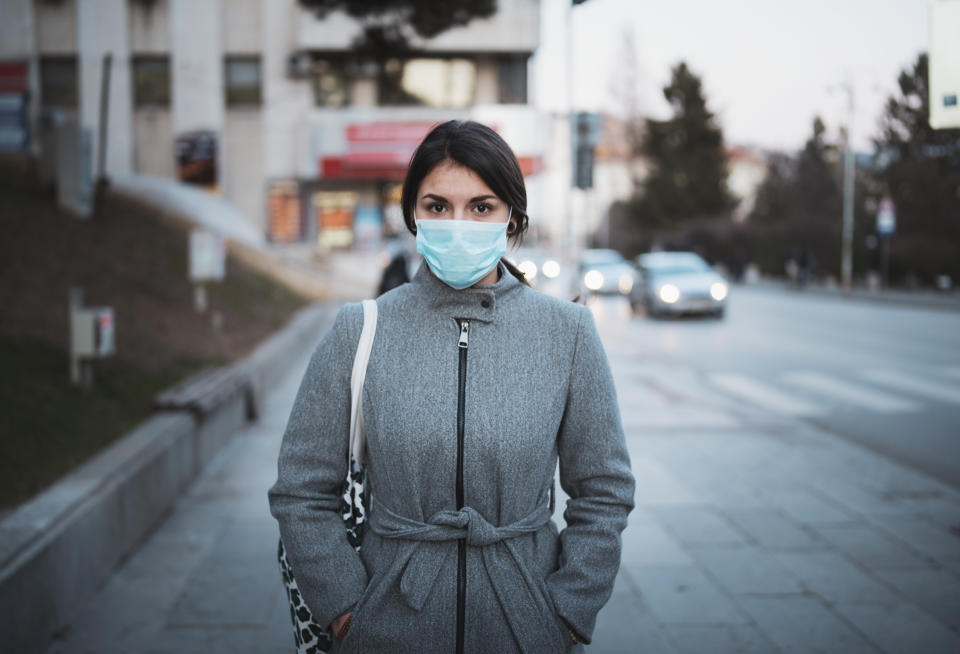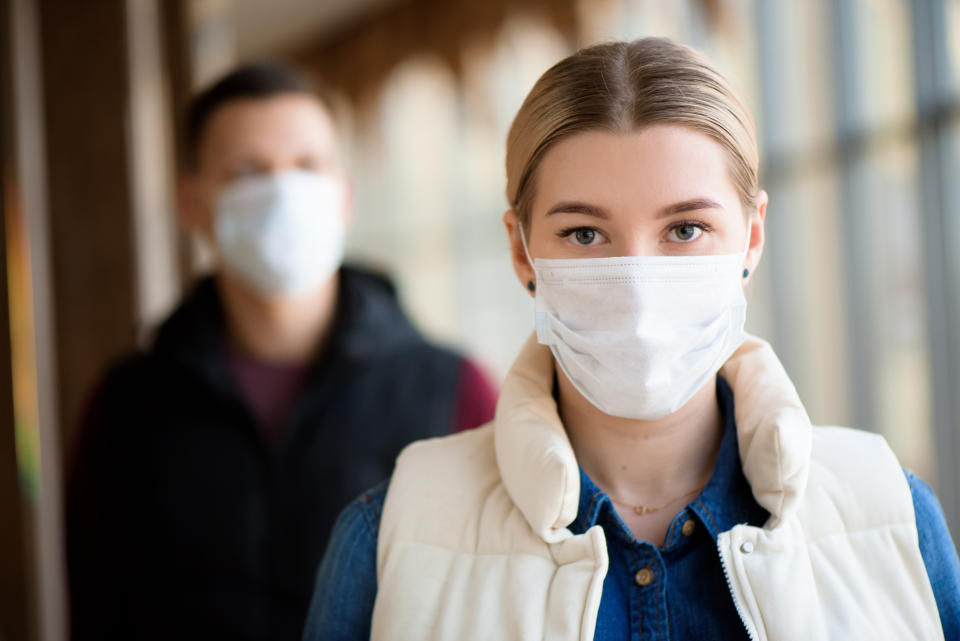Coronavirus: Face masks need to be part of our daily life
Face masks are now mandatory across Victoria and health officials are recommending people across NSW and the ACT wear them, particularly in hotspots.
And yet, if you have worn a mask out in public you might have gotten one of two looks: the ‘thank you’ from fellow Aussies recognising you are wearing a mask for the safety of others without making a fuss about it, or the ‘weirdo’ look from people likely not wearing one themselves, wondering why you’ve bought into the ‘conspiracy’.

In the US there was a period where face masks turned into a political statement, and even in Australia the idea of wearing a mask still stirs up mixed emotions for many. But why is that?
Dr Holly Seale, from the School of Public Health and Community Medicine at UNSW, tells Yahoo Lifestyle that like with any new habit, wearing is mask is something people need to get used to.
“For some people in the community, mask use will be very new,” Dr Seale tells us. “With starting any new habit, we know that it takes time to get used to things and this includes mask use.”
Why do people not want to wear face masks?
Aside from the ‘Karens’, who are taking it upon themselves to ignore any regulations or public health orders around face masks, there are still many that feel a little uncomfortable wearing one in public.
But Dr Seale says in studies done to date, most people have some level of ‘willingness’ to wear masks in the community, with the higher levels of compliance reported amongst women, older adults (aged >50 years), the highly educated, married individuals, and adults with poor self-rated health and/or home duties.
RELATED:
She says a lot of it has to do with someone’s perception of the risk of catching COVID-19 as well as how effective they perceive the use of masks to be.
“The challenge is that in some settings, people will think there is no point, as they don’t think they are at risk or know anyone who has been infected with COVID-19,” Dr Seale says.
“Reminding people that in some cases, the source of these spikes can be unknown and that clusters are associated with times where people are mingling.”

Celebrities and Influencers push to normalise face masks
A-Listers and Influencers have been sharing photos and videos online pushing to normalise the use of face masks.
Reese Witherspoon, Kim Kardashian, Cardi B are just a few of many. Gwyneth Paltrow, for example, shared a selfie via Instagram way back in February on her way to Paris with a fabric mask over her mouth.
“Paranoid? Prudent? Panicked? Placid? Pandemic? Propaganda?” the actress asked her followers at the time. “Paltrow’s just going to go ahead and sleep with this thing on the plane. I’ve already been in this movie. Stay safe. Don’t shake hands. Wash hands frequently. 😷.”

Jennifer Aniston has also been vocal on social media recently to show herself wearing a face mask while urging others do the same during the coronavirus pandemic.
Last month Jennifer shared a shocking photo of a friend in hospital to really hammer in the importance of taking COVID-19 seriously.
“This is COVID. This is real,” she wrote in the caption. “We can't be so naive to think we can outrun this ... if we want this to end, and we do, right? The one step we can take is PLEASE #WearADamnMask.”

Aussie fitness influencer Steph Claire Miller (Smith), who is currently living through Melbourne’s second round of strict lockdown measures, has also been vocal about making face masks a thing.
The co-founder of Keep It Cleaner took to her Instagram stories to encourage her 1.5M followers to not be afraid of wearing masks and support those that do. She also shared photos of herself sporting a reusable face mask along with the hashtag #wearamask.
How to promote acceptance of face masks
Dr Holly Seale says in order for face masks to be more universally accepted everyone needs to work towards normalising the behaviour, particularly the message behind why it is so important to wear one.
“We need to break down the ‘faceless’ community and highlight that there are those that we encounter in our networks and more broadly that may be at heightened risk and we don’t know it,” Dr Seale tells Yahoo Lifestyle. “That Our mask use will protect those around us.
“And that the collective effort will help towards reducing these spikes in community transmission.”

The fact people in the public eye and those with social influence are choosing to share images and videos of them wearing face masks is a big step in the right direction.
“We may need to use stories/personal insights to support mask use,” she says. “Hearing about where people bought their masks, what tips they picked up for using them, how they feel when using one, will all help.”
And of course, once we’ve convinced everyone to wear them, it’s also important to know how to wear a face mask properly.
“How to use the mask, when to use it, how to stop glasses from fogging up etc are just some of the new considerations that need to be tackled,” Dr Seale says.
“While we encourage people to ‘wear a mask’, it is also important to ensure that people are wearing them correctly. There is no point wearing them under your nose or under your chin.”
Click here to sign up to our daily newsletter to get all the latest news and hacks. Or if you have a story tip, email us at lifestyle.tips@verizonmedia.com.

 Yahoo Lifestyle
Yahoo Lifestyle 




